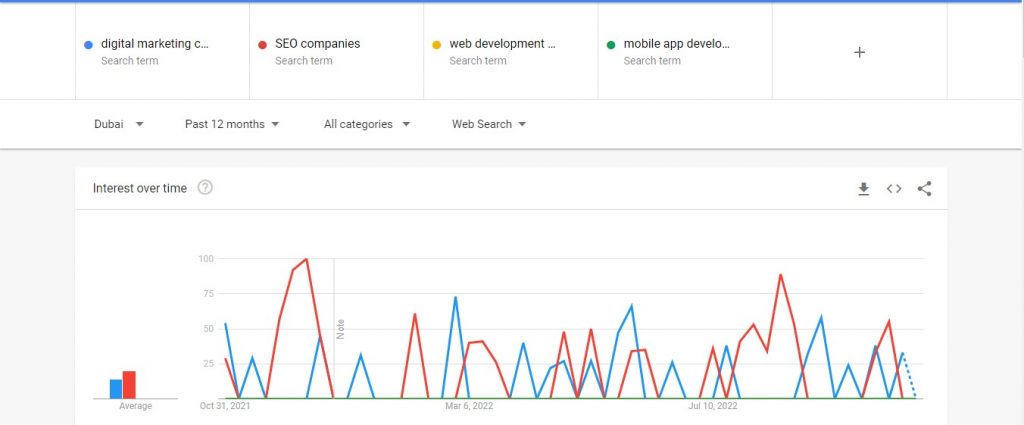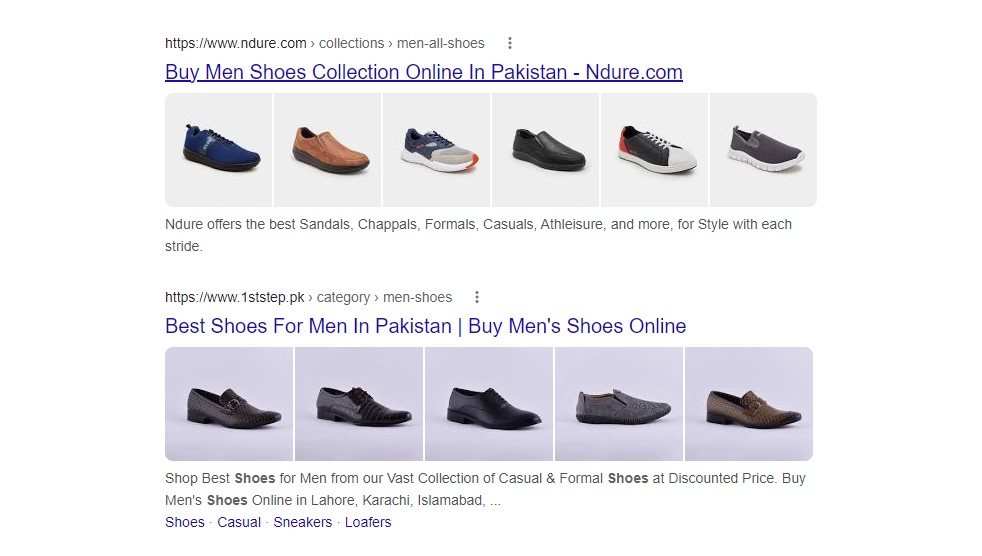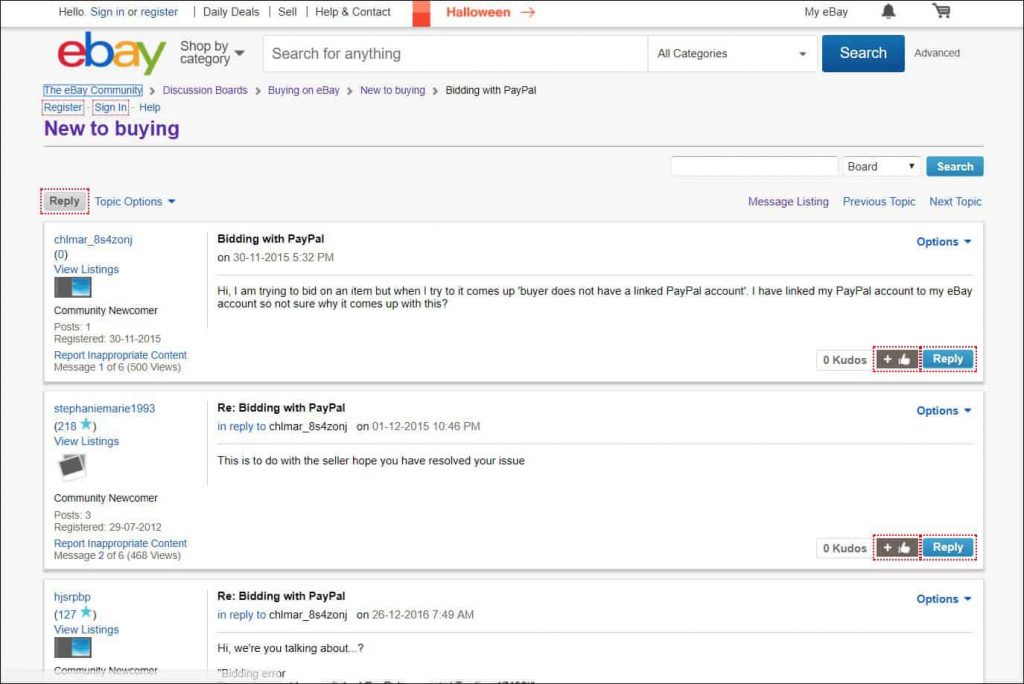Thomas Cook is a travel agency that offers holiday packages for numerous tourist attractions worldwide.
Now, imagine you want to purchase their services to visit Newyork. You might search with something like “the top places to see in Newyork.”
The company wants its page to pop up in front of you when you search. But the problem is their target audience is tremendous and multi-national.
They need to rank for “The top places to see in Washinton DC,” “The top places to see in Paris,” “The top places to see in Dubai,” “The top places to see in Bali,” and hundreds or thousands of similar keywords.
The solution comes to your mind. The company should create as many landing pages as they have keywords to cater to specific audiences.
Seriously? Who would create 500 pages to address all their target audiences? The results will include the developers’ charges, ad costs, and a lot of headaches.
You guess it. Programmatic SEO is the knight here who will save their business.
How? We will tell you in the next section.
What Is Programmatic SEO?
Programmatic SEO is a way to create and publish landing pages in bulk utilizing a database, aiming to secure top positions in SERPs for long-tail keywords.
It is a tool that uses specialized code to generate landing pages for a business based on keywords. It chooses and enters the keywords into the program to determine what types of pages they want it to create.
In this way, the business creates hundreds of different yet identical SEO landing pages targeting particular search terms or variations on sets of keywords.
Now, when a specific prospect searches using a search term, a landing page customized to it will pop up in front of them.
This way, the business gets the optimum amount of clicks. People search for these landing pages through voice, mobile, and local searches.
Programmatic SEO has become popular, like every new technique, and your competitors might be using it too. Do it right to get the desired results, or lose your money.
In this piece, we go through the nitty-gritty of this fabulous SEO technique to get the most clicks with large audiences.
How to Do Programmatic SEO the Right Way?
Like everything, programmatic SEO has a right and wrong way to do it. Stay with us to avoid learning it the hard way (after experimenting for yourself and losing resources in the process).
1- Search for Loads of Keywords

There is no SEO without keyword research. You carry out keyword research for doing programmatic SEO too. However, here you hear new terms like “head terms” and modifiers.”
Choose Your Head Terms
Head terms are broad spectrum groups of keywords with insanely high search volume as the word is very general. But, users search for them combined with modifiers.
Like digital marketing companies, SEO companies, mobile app development companies, and web development companies
Use any keyword research tool to find their search volumes. We recommend using Google Trends.
We searched on Google trends and found this:
Choose Your Modifiers
Head terms are super general, which means they will get you a lot of unnecessary traffic.
To filter it, you add a modifier to your head terms and bang. You get the perfect long-tail keyword your target customers are typing in the search bars. Modifiers usually have a higher search volume than the head term.
Modifiers are of two types — primary and secondary modifiers.
Primary Modifier
A primary modifier is an entirely new category that transforms the meaning of the head term.
Examples:
Houses: apartments, villas, bungalows
Shoes: shoes for women, hiking boots, snickers
Bags: handbags, backpacks, shopping bags
Secondary Modifier
A secondary modifier explains the head term. It will either alter the head term or change the head term combined with a primary modifier.
Examples:
Apartments: luxury apartments, 2-bed apartments, most affordable apartments
Shoes: comfortable shoes, leather shoes, high-heeled shoe
Bags: ladies' bags, bags for kids, men’s bags
You can find suitable modifiers using keyword research tools like Google Search Console or Ahrefs.
So, you discover your head terms and modifiers. What to do next? Arrange them in a Google sheet to keep them safe.
Compare Search Results at Scale

The next step is a competitive assessment of Google search results that pop up when someone types your keyword. It will show you your direct competitors for a targeted keyword.
Here again, keyword research tools come to your rescue. You can use Moz, SEMrush, Ubersuggest, or Ahrefs for that.
Suppose you search for “shoes” on Google. Here is the first SERP that appears:
If you target the keyword “shoes, ”your top competitors are shoe brands — Ndure, 1ststep, and Unze.
Then, enter those competitors' URLs in the tool and find the keywords they rank for, general UX patterns, backlinks, and tools they use for title tags.
UberSuggest is best for those who want to use a free keyword research tool. It only shows the number of keywords each site ranks for and doesn't show the exact keywords.
Still, you get what your competitors do, and it is enough. This data will help you discover the keywords you should use in your SEO landing pages using the programmatic method.
Creating Landing Pages at Scale
Finally, we have come to the most essential yet challenging part of our programmatic SEO strategy — creating thousands or hundreds of landing pages for different keywords.
Make Pages Around User Intent
If you have 5000 keywords to rank for, you don't need to create distinct landing pages for each one of those 5000 pages.
Users search, process, and utilize search engine results in different ways per their final objective, so your landing pages should revolve around the search intents behind the targetted keywords.
Now, what is search intent? Google decides the search intent for any search term typed in its search bar. It uses users' data and algorithms to do so.
The good thing is you can find what Google considers the search intent for a specific keyword with a simple search. Yes, Google’s guess isn’t always correct, but it is far better than your guess.
Also, use the “searches related to” segment at the bottom to get more knowledge about the intent behind a search term, according to Google.
Pay special attention to words in bold in the key phrases of the “related searches” section.
Create Large Volumes of Unique Landing Pages
All your landing pages will have the same layout and design. They will have the same pictures, maps, customer testimonials, price plans, product/service categories, or any other component suitable to your niche.
However, elements like images and details have to be different on each landing page. How would you do that?
Every website and business is different, so you need to work out the best strategy to do that by working closely with your developers.
But, we will discuss a few strategies used by some successful and popular websites.
Forums

Reddit needs no introduction. The community forum creates droves of unique material they can make into landing pages. For example, if you type “computer viruses,” you will probably see a Reddit forum in the first SERP.
They have thousands of forums revolving around various topics. Stack Overflow and Quora follow the same strategy and pop up in the featured snippets.
They don't create unique content for each landing page. They employ Q&A forums where everybody is allowed to ask something and answer a question.
This way, they continuously get user-generated content which shows Google crawler that each page is unique enough to be ranked. They examine users' queries, watch for patterns and then merge some questions to create one topic page. And they make thousands of topic pages using the same technique.
Can you guess another website that is killing it using the community strategy for programmatic SEO? Yes, Pinterest. It is an app many of us turn to when we need dress inspiration, painting ideas, design, etc.
Pinterest users put up pictures on the platform, write their descriptions and categorize them by naming their Pinterest profile. Pinterest doesn't create unique content. They convert user-generated content in the form of landing pages.
Ecommerce Platforms
Amazon is an e-commerce platform that generates millions of landing pages without having to create unique content by itself. They allow e-commerce sellers and marketers to create their accounts and manage them.
So, they keep getting unique content uploaded by the marketers, which they change into landing pages. Etsy, Ebay, Daraz and many other ecommerce paltforms use this stratgey.
Two-sided Marketplaces
Two-sided marketplaces like Yelp also apply programmatic SEO without doing the heavy lifting. The businesses add information to the pages like product descriptions, pictures, FAQs, location, business hours, contact numbers, service details, etc.
Then there are customer reviews that provide a constant inflow of unique material for each page. Reputable SEO services in Dubai can guide you on which strategy will suit your website.
Say No to Doorway Pages
Google forbids creating doorway pages as part of its latest strategy of prioritizing user-first content and penalizing search engine-only content.
What are doorway pages? According to Google:
“Doorways are sites or pages created to rank highly for specific search queries. They are bad for users because they can lead to multiple similar pages in user search results, where each result ends up taking the user to essentially the same destination. They can also lead users to intermediate pages that are not as useful as the final destination.
Examples of doorways include:
- Having multiple websites with slight variations to the URL and homepage to maximize their reach for any specific query
- Having many domain names or pages targeted at specific regions or cities that funnel users to one page
- Pages generated to funnel visitors into the actual usable or relevant portion of your site(s)
- Substantially similar pages closer to search results than a clearly defined browseable hierarchy.”
We all have been doing this — creating doorway pages. Don't get disheartened. Programmatic SEO will still work for you. Google doesn't ask you to avoid linking to ‘helpful’ content.
The trick is to create tons of landing pages while still providing value to visitors through content. Google won’t punish your pages as long as they exist for a genuine reason.
Generating Links in Large Volumes
Like creating unique content, you don’t have a one-size-fit-for-all link-building strategy. You have to figure out what works best for you.
That doesn’t mean we won't help you. Here we go:
Throw Ego-bait to Get Links
Yelp and eBay are two-sided marketplaces that employ ego-bait techniques for link-building. Inbound links are usually embedded in codes.
You can provide an embed code of a star, badge, or any other visual reward to a brand on your website. And, then you can request a backlink from the brand as a goodwill gesture.
Offer loads of visual bonuses to acquire many backlinks. For instance, some websites feature the logo of TripAdvisor recommending its services.
Develop Viral Content
Making content viral seems super challenging these days. However, the trick is quite simple. You use your creative muscles to make something people like and share impulsively.
We all love BuzzFeed content. How did they get famous when they were a small startup? They grew their audience by making content users genuinely enjoy and relate to.
You create content along the same lines using your innovative skills to make it go viral.
Use Data
We all use Statista as our go-to resource for first-hand research and information on any niche or subject. They started small by carrying out a handful of surveys.
Statista creates material in large volumes using data. They have information on all topics, countries, and states that generate more content for them.
Generate Landing Pages with Data
You need to gather the data for each landing page before starting to generate them automatically in large volumes.
Before beginning, plan about what kinds of information you need to construct landing pages targeting your head terms to secure top positions in Google.
Evaluate competitors’ websites again and replicate their methods and strategies if it suits you.
You Have the Data
Depending on your condition, you might have the necessary information, which means you own data. If your website is a community site, marketplace, or other niches where users provide content, you will already have tons of data.
You can utilize this data to create the pages for the head term. For instance, Zapier is a product that users integrate with their apps to automate tasks.
As users integrate it with software, Zapier’s databases collect the user data, including which app integrations are the most popular.
When they need to build landing pages, they use this data to attract their end users better. They couldn’t create landing pages around Zapier’s integration with every web app worldwide.
So, they only focus on what is in demand and save their time and resources.
You Gather Data Manually
Otherwise, you manually discover, scrape, curate, or extract information from APIs. A few software that can help you to apply programmatic SEO to your landing pages are Hubspot, WordPress, and Webflow.
Let's take the example of Zapiers again. As they have user data, they found out that a lot of their consumers search for two processes — Form Submission and Add Subscriber to Form.
They placed these two options at the top of the landing page, followed by all triggers and actions their software supports for ConvertKit and Webflow integration.
They use this information to generate content for their landing pages to get the most clicks and, eventually, sales. Visitors click on one of the options to begin establishing the workflows between the two software, which converts visitors into users.
Then they display a step-by-step guide to integrate both tools. Using a template, they automatically generated it with a few simple changes. The purpose of this guide is to take people to their call to action, which says
Connect ConvertKit + Webflow.
What about “helpful content” algorithms hunting to over-rank or under-rank pages in the search results? They place it at the bottom. An introduction of Webflow and ConvertKit and links to other tools users integrate.
It Is Too Much Headache
Yes, we know. As small businesses or startups, it's tough to carve out time for all the researching for head terms, gathering data, and figuring out the best programmatic SEO strategy for your site.
You can’t be a jack of all trades. And you don't have to. Credible SEO services in Dubai, like Maven Digital, can save your neck.
Search engine optimization has been changing rapidly, like everything else related to the tech world. Our company has an SEO team of geniuses who create SEO strategies for clients in line with the latest trends.
Contact us today to rank higher than your competitors and increase your bottom line!








